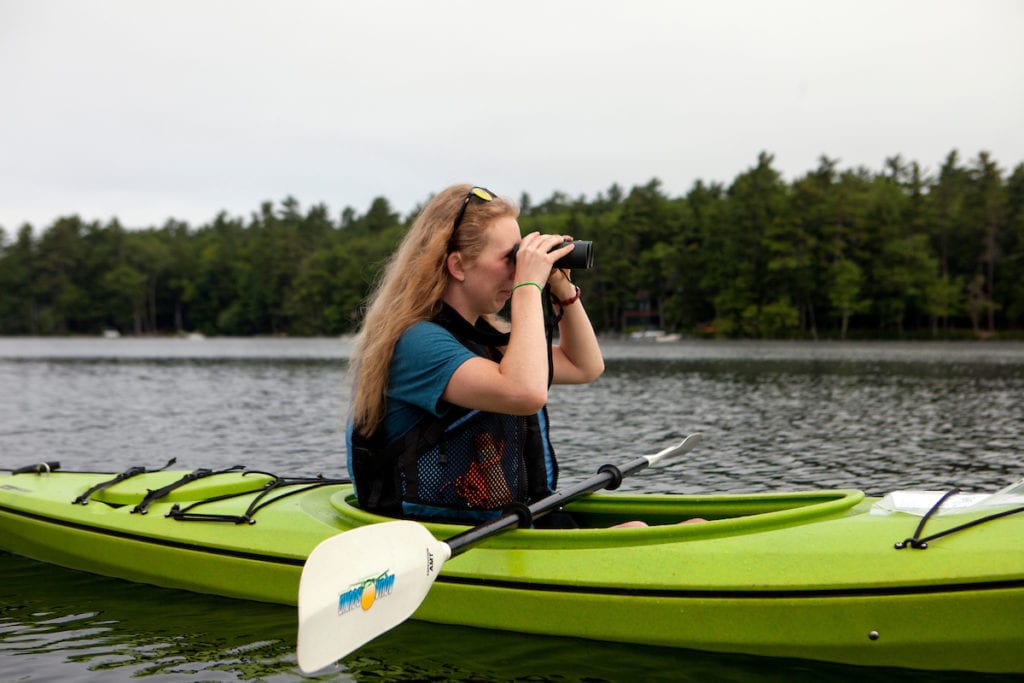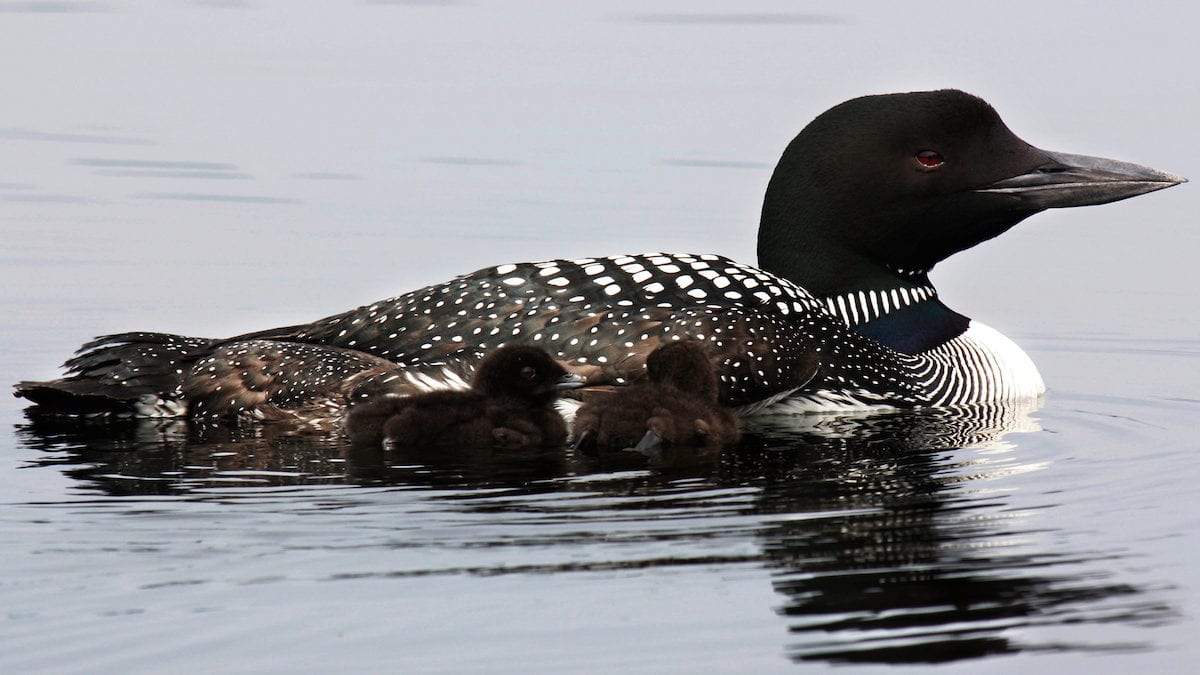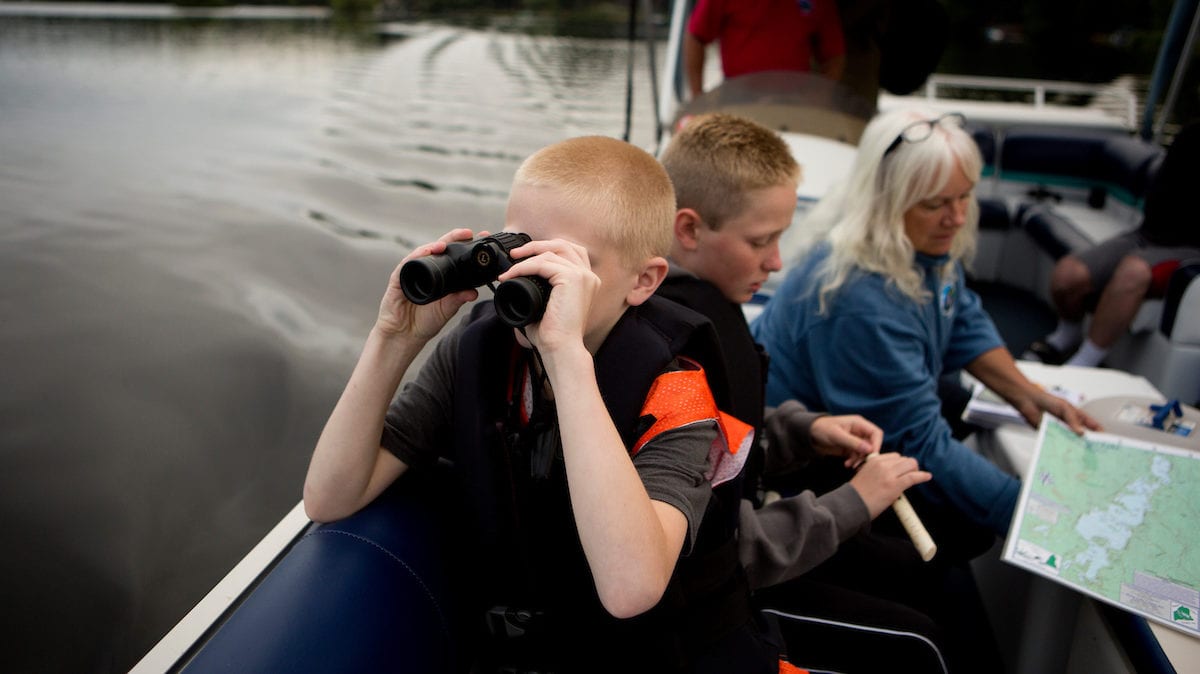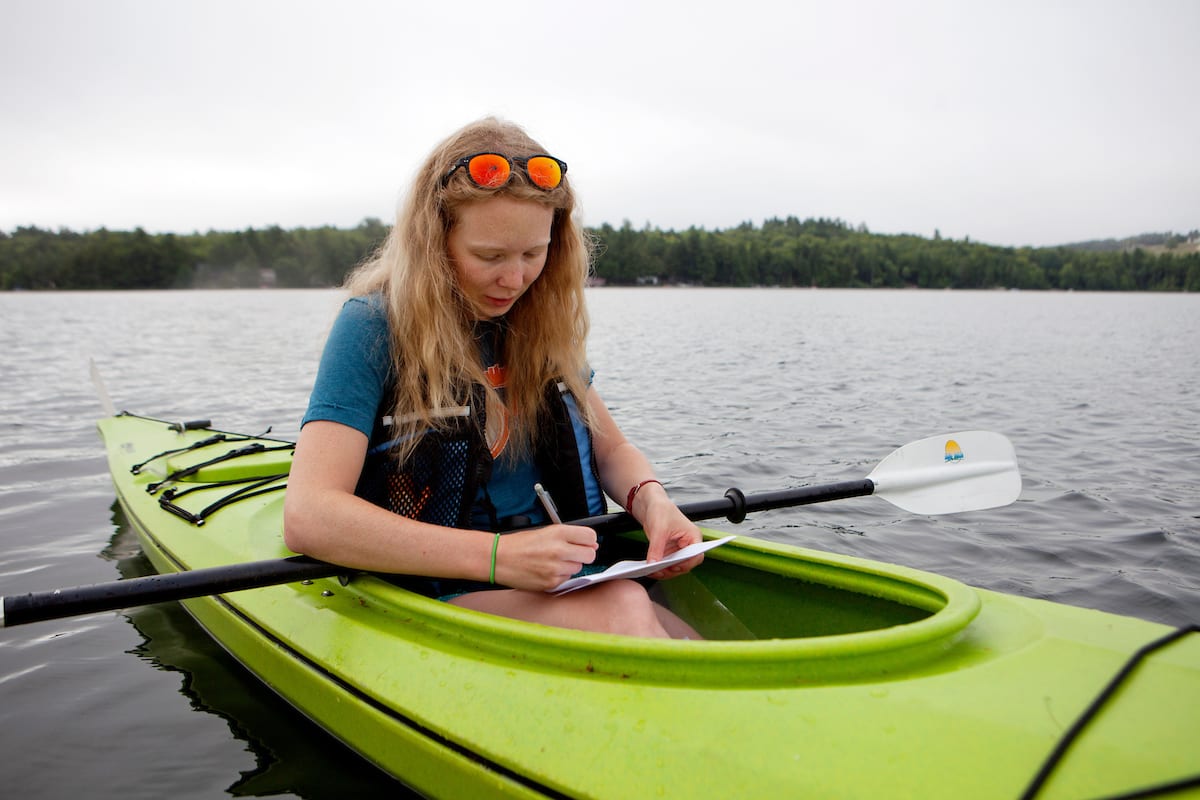
This past July marked the 35th anniversary of Maine Audubon’s Annual Loon Count. As has happened on each third Saturday of July since 1984, a corps of dedicated volunteers ventured out on lakes and ponds across the state to search for, and count, Common Loons.
In the 2018 count, 1,350 people participated, tallying loon adults and chicks on 303 lakes and ponds and providing reliable survey data that Maine Audubon uses to estimate the size of the population and look at trends over time.
For many counters, the day started out foggy. For some, the fog lifted, but for others it significantly impaired visibility. Despite that, most counters reported having good weather, and were able to conduct their counts just fine. By the end of the 30 minute window of the count, our citizen science volunteers had completed their tallies. You can see counters’ images from the day here.
Using a random sample of counts from lakes from each of seven different size categories, we project a population of 3,269 adult Common Loons and 406 chicks for the southern half of Maine. (Each year, our estimate is for Maine south of the 45th parallel, where we have enough lakes covered by counters to make a reliable estimate.)
What are the trends?
 The total number of adults was “steady” from 2015-2017, but then jumped this year to the second-highest estimate ever recorded. The number of chicks saw a bump in 2016 from 2015, followed by similar numbers in 2017 and 2018. The 2018 estimate for chicks is the fifth-highest ever recorded. Anytime we are producing more chicks, we have the potential to see more adults in six or seven years (the time it takes to reach mature breeding age). You can also check out Loon Count Results from 2017 and 2016.
The total number of adults was “steady” from 2015-2017, but then jumped this year to the second-highest estimate ever recorded. The number of chicks saw a bump in 2016 from 2015, followed by similar numbers in 2017 and 2018. The 2018 estimate for chicks is the fifth-highest ever recorded. Anytime we are producing more chicks, we have the potential to see more adults in six or seven years (the time it takes to reach mature breeding age). You can also check out Loon Count Results from 2017 and 2016.
What does it mean?
The increase in the number of adults was driven largely by higher numbers on smaller lakes — specifically those lakes between 51 and 500 acres. Numbers from lakes under 51 acres were flat, probably already at capacity with one pair per lake. But lakes in the 51-100, 101-200, and 201-500 acre categories all saw increases in the number of adults counted.
We don’t know for sure what’s behind the increase in total numbers, but suspect a big part of the reason is our dedicated counters. We know that people all across the state not only count loons on the third Saturday of July, but are continually watching out for loons throughout the summer and helping educate others about how to take care of loons and their habitat. So thank you to these dedicated citizen science volunteers!
A Special Anniversary
 In celebration of our 35th-year anniversary, we recently sent a Certificate of Accomplishment to our Loon Count volunteers who have participated for five or more years. Here’s how those numbers break down:
In celebration of our 35th-year anniversary, we recently sent a Certificate of Accomplishment to our Loon Count volunteers who have participated for five or more years. Here’s how those numbers break down:
- 5-10 years: 130 volunteers
- 11-20 years: 211 volunteers
- 21-30 years: 37 volunteers
- 31-34 years: 13 volunteers
- All 35 years: 11 volunteers
This last category — folks who have counted EVERY YEAR for 35 years — is a special one. We received some fun stories and pictures from them, including a note from Arthur Staples from Fish Pond, who will turn 93 in December. That’s dedication for you! We hope all counters enjoy and share their accolades with friends and neighbors.
We also have some long-time Regional Count Coordinators that we want to recognize, including Mary Ellen Bossom, who is retiring from coordinating Great Moose Lake after 26 years; Elwood Beach, Raymond Pond coordinator for 27 years; and Leslie Rosser, Woodbury Pond coordinator for 26 years. They deserve special thanks for their long-standing service.
In 2019, we will be moving to online reporting of count numbers for those who can do so, but we will still provide paper maps and data forms for those who either don’t have easy access to a computer or prefer paper to electronic reporting. Loon count data for previous years is already in the Loon Portal at the Lakes of Maine website, and we will be adding the 2018 numbers soon in case you are interested in looking up details by lake.
This year also marked another unexpected anniversary: it will be the last of 20 years of running the Maine Loon Project for Susan Gallo. But don’t worry — we will still work closely with Susan, as she is now the Executive Director of the Maine Lakes Society, an organization with which we have a long history of partnering (including a recent expansion of the LakeSmart program).
In fact, Susan will be speaking about loons and lakes at Maine Audubon’s Gilsland Farm Center as part of our Speaker Series on December 13. Join us to learn from her about this important work, and to wish her well in her new adventure!
Gearing up for 2019
The 36th Annual Loon Count will happen on the morning of July 20, 2019! To learn more about the count and how you can get involved, visit our Loon Count page or contact us at conserve@maineaudubon.org.



